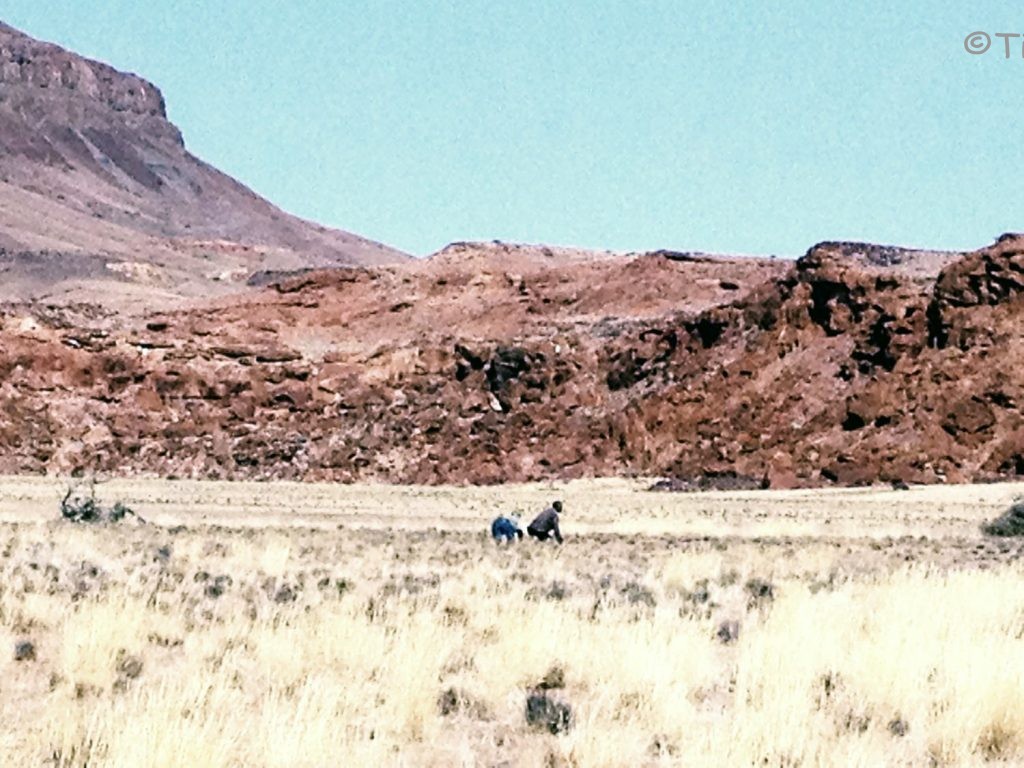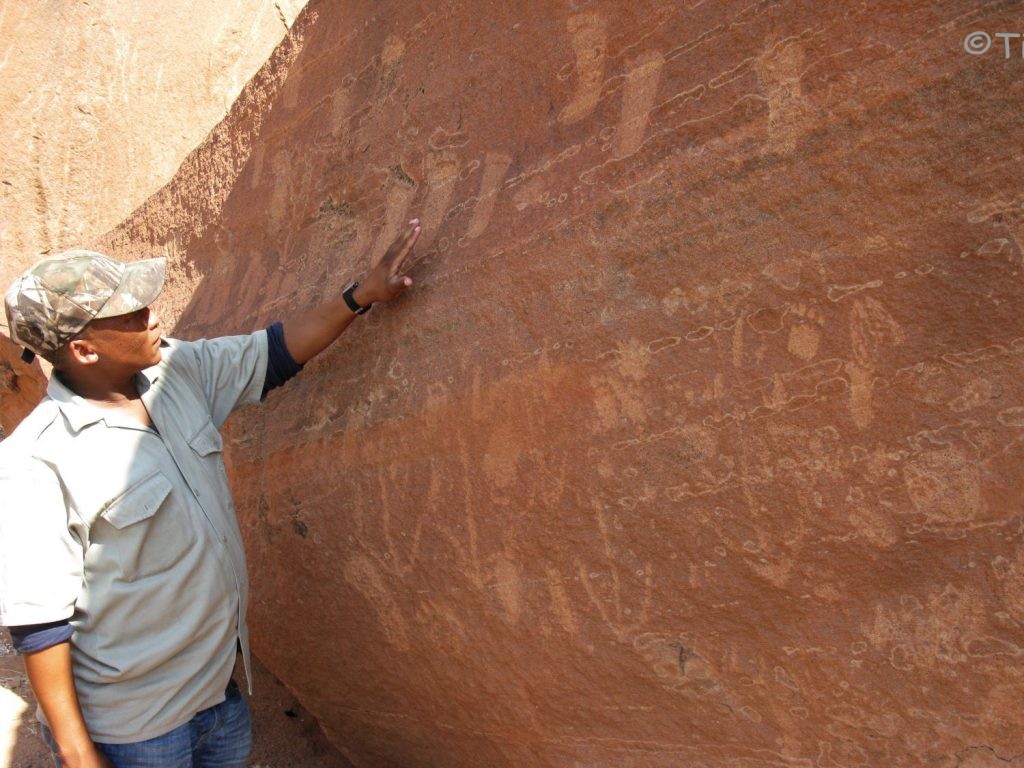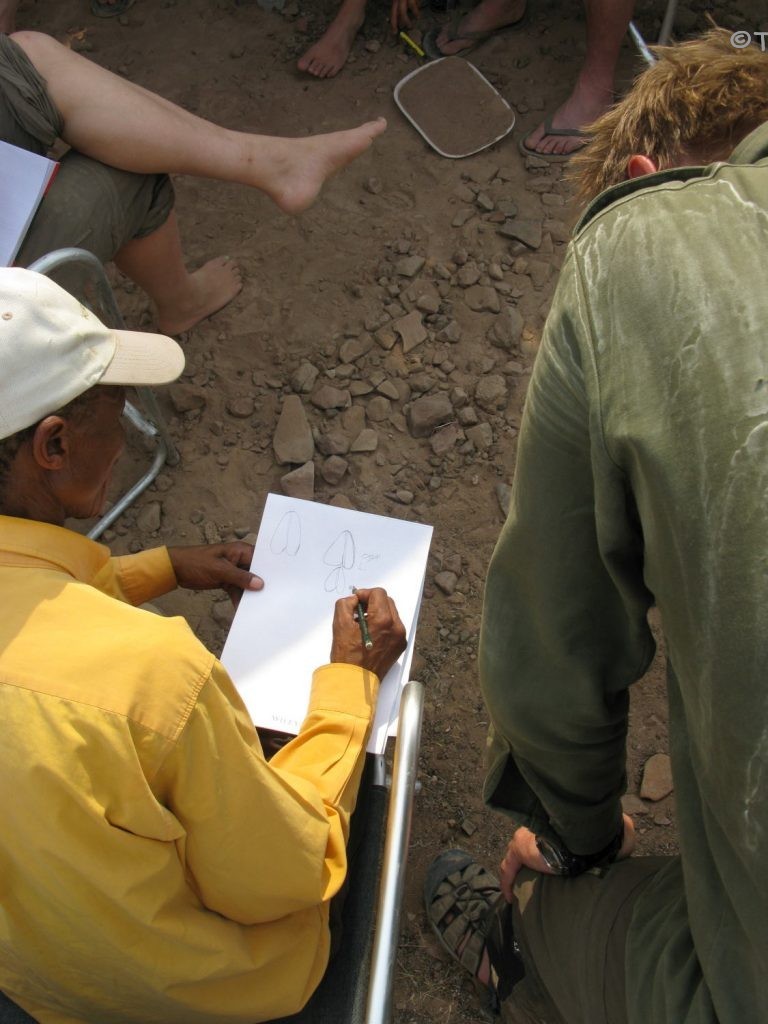Tracking in Caves was started not only to open up new information for archaeology by involving experts from other knowledge cultures, but also to have an effect onto archaeology itself. In the long run we anticipate shaping at least part of archaeological research in a way that academic and indigenous knowledge work hand in hand and archaeology thus becomes a hybrid science.
Some projects are in the pipeline that are planned to follow this concept over several years. First of all there are still many human tracks in caves with palaeolithic archaeological finds and in view of the prolificness of the first investigations in 2013 it is planned to generate similarly detailed data also from other caves in France and Spain. Besides these analyses, research is also aimed at determining the specific methodology implied by trackers when they analyse a footprint. Even though tracking is typical „tacit knowledge“ (M. Polanyi) it will be attempted to make explicit as much of it as possible in order to eventually include it in archaeology’s normal methodological ‚tool kit‘.
Another project involves trackers in an environment that is more familiar to them: In central western Namibia, west of the World Heritage Site /Ui-//aes (Twyfelfontein), there is a landscape rich in archaeological finds, rock art in particular, and also rich in wildlife. All big game animals can be encountered there in the open landscape. The project aims at documenting over long periods the ways hunters go in this landscape if they constantly stalk animals as though they wanted to hunt them the traditional way without fire arms. These paths of the simulated traditional hunting will then be mapped onto the map of the area with all archeological sites in order to find out about the correlations of site locationss and hunting paths. They can also be correlated with modern GIS models such as Least Cost Path calculations and help to better understand prehistoric landscape use.
Furthermore in still another project it will be attempted to establish a scheme for the analysis of animals in rock art that is based on the specific knowledge of hunters. Their fine grained observations of animal behaviour and body postures are a crucial precondition for their hunting success. It is anticipated that many depictions in rock art reproduce behavioural details that are only recognizable and interpretable by expert hunters. It is anticipated that the descriptive framework for rock art analysis can be enriched significantly if knowledge is included that has more overlaps with the knowledge of prehistoric cultures than that which is acquired by academic training.








